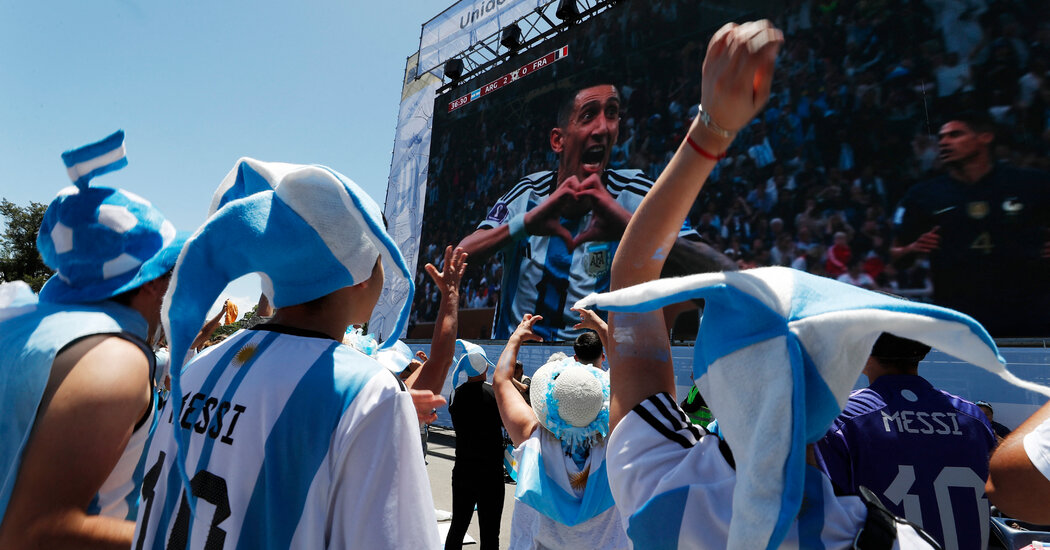Formula 1 Keeps Adding Races
There are more Formula 1 races than ever, and next season there will be even more, with 24 races, the most in the sport’s history.
This year’s Formula 1 schedule, at 23 events, should have set the record, but the Emilia Romagna Grand Prix was canceled because of the extreme rainfall that devastated the region. That event, at the Imola circuit in Italy, will return on May 19, 2024, and will be the seventh race of the year.
Also returning to the calendar is the Chinese Grand Prix, which was last held at the Shanghai International Circuit in 2019. Formula 1 and the Chinese race’s promoter have a contract through 2025, and next year’s Grand Prix will be on April 21, the season’s fifth race.
“Now there’s a lot of people really into racing and Formula 1 who can’t wait to go back there — also myself — for the Grand Prix,” said Zhou Guanyu of China, who drives for Alfa Romeo.
The other 22 Grands Prix from the 2023 calendar have all been retained, with 15 outside of Western Europe, where the majority of the sport’s personnel are based. The season will begin on March 2 in Bahrain and conclude on Dec. 8 in Abu Dhabi, United Arab Emirates.
“There is huge interest and continued demand for Formula 1, and I believe this calendar strikes the right balance between traditional races and new and existing venues,” said Stefano Domenicali, the chief executive of Formula 1.
There has been movement toward regionalizing the calendar to reduce travel and aid in sustainability, with some events, notably in Japan, Azerbaijan and Qatar, moving in the schedule to ease travel.
However, there are still some awkward trips. The three events in the United States remain separated, with Miami the sixth round on May 5; Austin, Texas, the 19th round on Oct. 20; and Las Vegas the 22nd round on Nov. 23. Australia, the third round on March 24, is far from other events, but Japan is the next race, on April 7. Canada, the ninth round on June 9, is, like Australia, by itself amid a string of European events.
Some drivers are resigned to the expanded schedule.
“It’s too many [races] for me, but we just have to deal with it,” said Max Verstappen of Red Bull after the calendar’s release in July. “I think it’s a bit more logical the way it’s planned at least, so I guess that’s better for everyone.”
Lando Norris of McLaren also noted the amount of races.
“I’d say 24 is a lot,” he said. “If I had to put like a perfect number, I would say it’s probably closer to 20. For the lives of mechanics, engineers, everyone that travels, they’re away from their families, kids and so on, for so many days, more days than us as drivers are away, so it’s tougher for them.”
Fernando Alonso of Aston Martin first raced in a Grand Prix in 2001, when there were 17 events, six of which were outside of Europe.
“I understand the benefits of 24 races, the reasons behind it, there’s a lot of interest in Formula 1, a lot of demand, so it’s good to go to new countries, new races, and there is new revenue,” he said. “But I think for team members 18 is a good number. More than 18-19, and you start stressing the mechanics, the media. Everyone is just on the back foot from February to December.”
Teams rotate staff members when possible to give them some time off. There is also a nine-day winter factory shutdown when the sites that work on the cars must be mostly closed, as well as a 14-day August recess. Drivers and others are also conscious about oversaturation, particularly with the addition of the sprint races that have been held the day before the main race at six Grands Prix this year.
There is also the balance between retaining the historic venues, such as Monaco and Silverstone in England, and seeking new ones. Formula 1’s events in the Middle East all have contracts stretching into the 2030s, but many older European events are on shorter deals and others, such as France and Germany, have been discontinued. Monaco and Italy have contracts expiring after 2025, while Belgium’s contract expires at the end of this year.
The sport is “looking to expand their calendar more and more, and you can see a lot of the new venues that are coming to Formula 1 are quite commercial venues, like Miami, or Vegas this year,” said Stoffel Vandoorne, who raced in 2017 and 2018 for McLaren and is now an Aston Martin and McLaren reserve driver. “They’re big places that they’re going to, and I think that’s fine, absolutely fine, but I still think there needs to be a combination of both on the calendar, to retain these races, like Spa [in Belgium], like Suzuka [in Japan], that are the proper old-school tracks.”
Adding races is nothing new. Saudi Arabia and Qatar were added in 2021, Miami in 2022 and Las Vegas this year. Each promoter pays a hosting fee to Formula 1, boosting its revenues, which in turn increases prize money for teams.
Under the Concorde Agreement, which binds together Formula 1, the F.I.A. and the teams, the annual limit for Grands Prix is 24, but other venues are still being explored.
Formula 1 has long been seeking a return to Africa as it strives to have a round on most continents. The Kyalami circuit in South Africa last hosted a Grand Prix in 1993.


